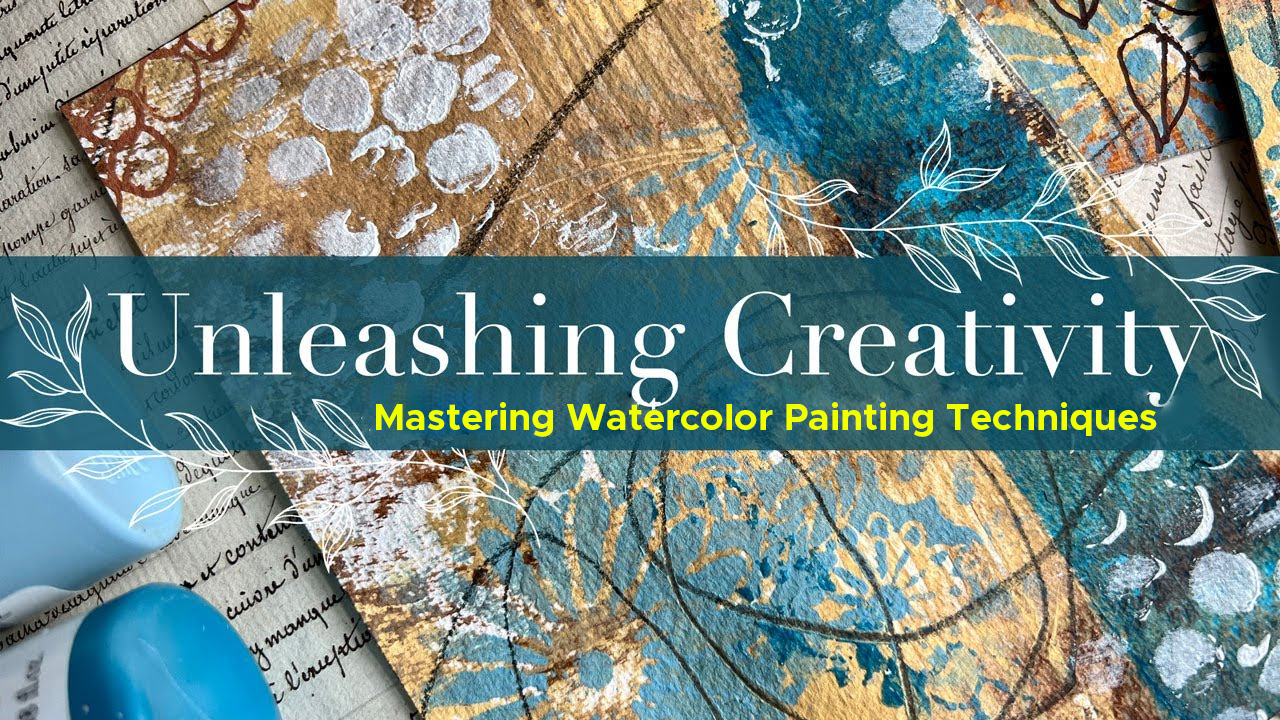Watercolor painting is a versatile and expressive medium that has captivated artists for centuries. Known for its luminous transparency and fluidity, watercolors offer a unique way to capture light, color, and emotion in artworks. Whether you're a beginner exploring the world of watercolors or an experienced artist looking to refine your skills, mastering watercolor painting techniques is essential to creating stunning and captivating artworks. In this article, we will delve into some of the best techniques for working with watercolors that can help you unlock your creativity and elevate your paintings to new heights.
1. Understand Your Materials:
Before diving into watercolor painting, it's important to familiarize yourself with your materials. Different types of watercolor paints, brushes, papers, and techniques can yield varying results. Experiment with different brands and grades of watercolors, brushes of different shapes and sizes, and types of watercolor paper to discover what works best for your style and preferences.
2. Master Wet-on-Wet Technique:
The wet-on-wet technique involves applying wet paint onto a wet surface, allowing colors to blend and bleed together organically. This technique is great for creating soft transitions, gradients, and expressive washes in your paintings. Experiment with different levels of wetness on the paper and varying paint consistencies to achieve different effects.
3. Explore Wet-on-Dry Technique:
Contrary to wet-on-wet, the wet-on-dry technique involves applying wet paint onto a dry surface. This technique allows for more control and precision in your brushstrokes, making it ideal for adding details, textures, and crisp edges to your watercolor paintings. Mix and layer colors on dry paper to create intricate and vibrant effects.
4. Practice Layering and Glazing:
Layering and glazing are essential techniques in watercolor painting that allow you to build up depth, richness, and complexity in your artworks. Experiment with transparent washes of color, letting each layer dry before adding another to create luminous effects and subtle transitions. Combine different colors and values to create harmonious and dynamic compositions.
5. Utilize Masking Fluid:
Masking fluid is a handy tool that allows you to preserve areas of white paper or previously painted colors while you work on other parts of your painting. Use masking fluid to create highlights, textures, or intricate details that you want to protect from paint. Remember to let the masking fluid dry completely before painting over it and gently remove it once your painting is dry.
6. Embrace Negative Painting:
Negative painting is a technique where you paint around the subject to define its shape and form by emphasizing the background. This technique can create depth, dimension, and visual interest in your watercolor paintings. Experiment with negative painting to create intricate patterns, textures, and atmospheric effects in your artworks.
7. Learn to Control Water:
Controlling the amount of water in your brush and on your paper is crucial in watercolor painting. Practice varying the wetness of your brush and paper to achieve different effects, from soft washes to sharp details. Pay attention to the flow of water and pigment on the paper to create expressive and dynamic brushstrokes.
In conclusion, watercolor painting offers a world of creative possibilities for artists to explore and experiment with. By mastering these watercolor painting techniques and incorporating them into your artistic practice, you can unleash your creativity, enhance your skills, and create captivating and expressive artworks that resonate with viewers. So immerse yourself in the magical world of watercolors, embrace the fluidity and luminosity of this versatile medium, and let your creativity flow freely on the paper. Experiment with different techniques, materials, and styles to discover your unique voice as a watercolor artist.
Remember that practice is key to mastering watercolor painting. Set aside time for regular painting sessions, experiment with new techniques, and don't be afraid to make mistakes along the way. Embrace the unpredictable nature of watercolors and use it to your advantage to create beautiful and expressive artworks.
Seek inspiration from the world around you - nature, architecture, people, and emotions can all serve as sources of creativity for your watercolor paintings. Study the works of master watercolor artists, attend workshops and classes, and connect with other artists to learn and grow in your practice.
Above all, enjoy the process of creating with watercolors. Let go of perfectionism and allow yourself to play, explore, and experiment with this captivating medium. With dedication, patience, and a sense of curiosity, you can unlock the full potential of watercolor painting and create artworks that inspire and delight both yourself and others.
So pick up your brushes, squeeze out your favorite colors, and dive into the world of watercolors with passion and enthusiasm. Let your imagination soar, and watch as your paintings come to life with beauty, emotion, and expression. Happy painting!

kxDnTsqwzdMLI
kxDnTsqwzdMLI
SMBrsEvuthTWPIKO